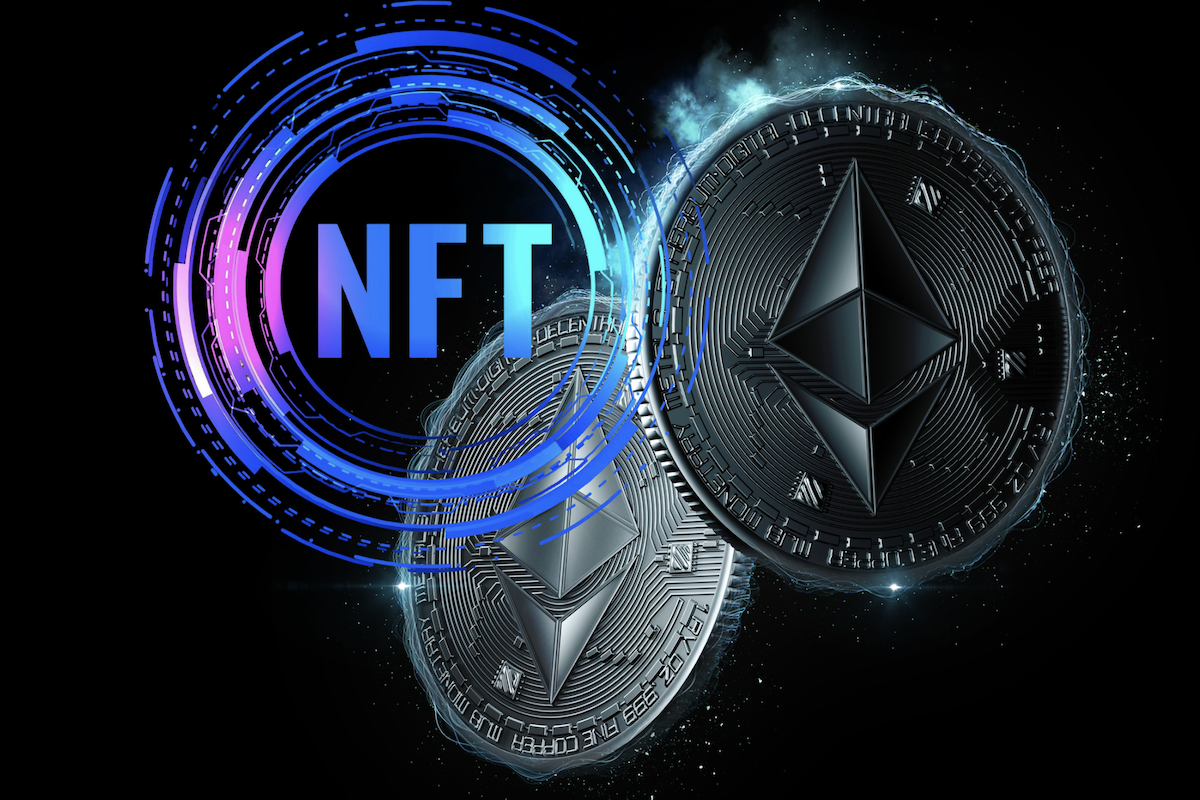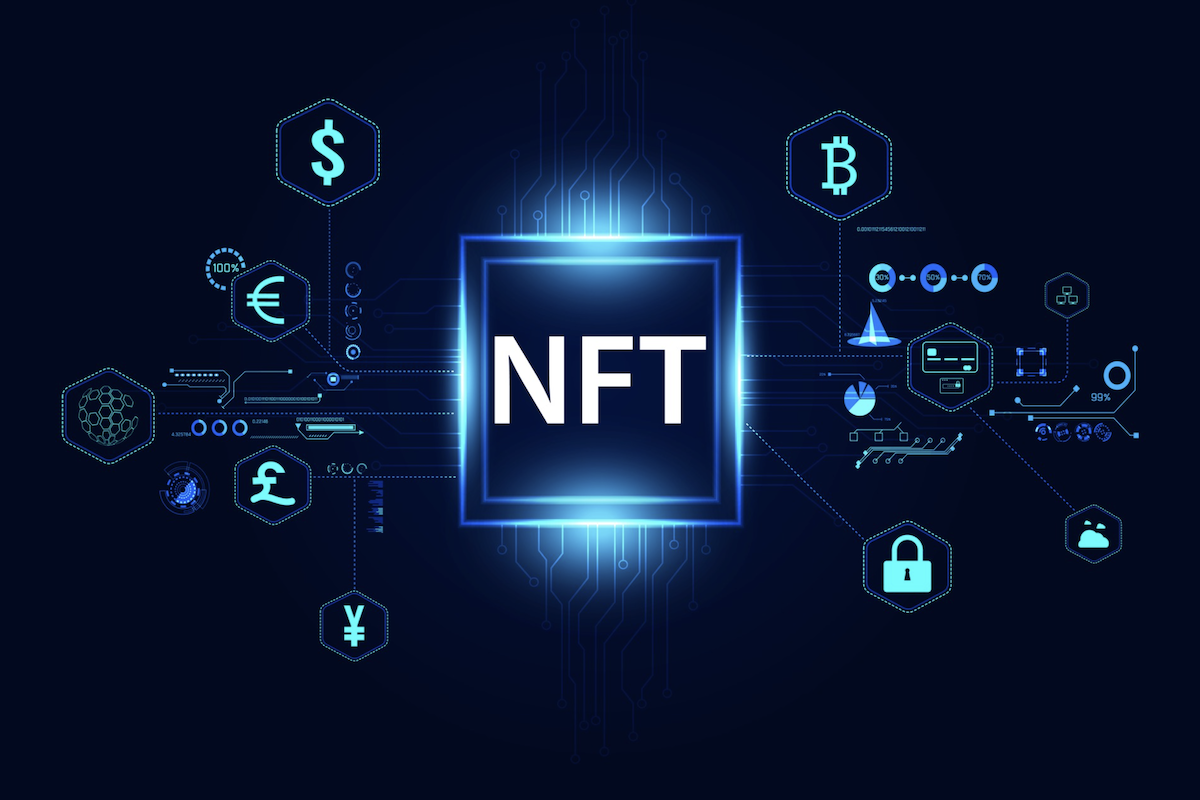Mastering ERC-1155: A Comprehensive Guide to Semi-Fungible Tokens
Learn about the revolutionary ERC-1155 standard and how it simplifies the management of multiple token types within a single smart contract.

What is ERC-1155?
Definition and Explanation
The ERC-1155 standard is a revolutionary interface designed to manage multiple token types, including fungible, non-fungible, and semi-fungible tokens. Unlike earlier standards such as ERC-20 and ERC-721, which require deploying separate contracts for each token type, ERC-1155 allows for the representation of various token types within a single smart contract, eliminating the need to approve individual token contracts separately and reducing transaction costs and complexity.
Semi-fungible tokens, which combine the characteristics of both fungible and non-fungible tokens, are particularly well-suited for the ERC-1155 standard. For example, a semi-fungible token could represent a concert ticket, which is fungible before the event (any ticket to the same event is of equal value) but becomes non-fungible after the event (as it might serve as a unique memento of attendance). ERC-1155’s capability to handle such complex scenarios within a single contract makes it an attractive option for developers and businesses aiming to utilize blockchain technology for diverse applications.
Technical Overview
Smart Contract Architecture
At its core, ERC-1155 outlines a smart contract interface that can represent any number of fungible and non-fungible token types. This is a significant improvement over existing standards like ERC-20, which necessitates approving individual token contracts separately. By enabling a single smart contract to manage multiple token types, ERC-1155 simplifies the process and reduces associated costs.
The architecture of an ERC-1155 contract is designed to be highly modular and efficient. Each token type within the contract is identified by a unique token ID, allowing for customizable behavior and metadata. The standard also supports batch operations, enabling the transfer or querying of multiple token types in a single transaction, which greatly enhances scalability and usability.
The design also emphasizes security and interoperability. By following a standardized approach, ERC-1155 ensures that tokens created under this standard can interact seamlessly with existing wallets, exchanges, and decentralized applications (dApps). This interoperability is crucial for fostering a robust and integrated blockchain ecosystem.
Benefits of ERC-1155
Advantages Over Traditional Token Standards
Efficiency and Cost-Effectiveness
Traditional token standards such as ERC-20 and ERC-721 require deploying separate contracts for each token type or collection. This increases deployment costs and complicates interactions between different token types. ERC-1155 allows each token ID to represent a new configurable token type within a single contract, streamlining the deployment process and reducing costs.
The efficiency of ERC-1155 is further demonstrated in its transaction model. By allowing batch transfers, where multiple tokens can be sent in a single transaction, ERC-1155 significantly reduces the amount of gas needed. This makes the standard more cost-effective, particularly in scenarios involving high-frequency transactions, such as gaming and digital collectibles.
Frictionless Interactions
The ERC-1155 standard facilitates frictionless interactions with exchange and trade contracts. Its batch transfer functionality allows for the simultaneous transfer of multiple tokens, reducing the number of transactions required and lowering gas fees. This makes ERC-1155 particularly attractive for applications involving high-frequency transactions, such as gaming and digital collectibles.
For instance, in a gaming environment, players can trade multiple in-game items in one go, enhancing user experience and operational efficiency. Similarly, in digital marketplaces, users can buy, sell, or trade various digital assets simultaneously, streamlining the process and reducing costs.
Enhanced Flexibility
ERC-1155’s ability to manage both fungible and non-fungible tokens within a single contract offers enhanced flexibility for developers. This versatility supports a wide range of applications, from gaming and digital collectibles to real estate tokenization and supply chain management.
Developers can also leverage the modularity of ERC-1155 to create complex token ecosystems. For example, they can design tokens with specific attributes or functionalities that interact with each other, creating a dynamic and rich user experience. This flexibility opens up new avenues for innovation in the blockchain space.
Creating an ERC-1155 Token
Step-by-Step Guide
Step 1: Connect to a Blockchain
Begin by connecting to a blockchain network, such as Ethereum, using a development environment like Remix or a framework like Truffle. Ensure you have a wallet with sufficient Ether to cover deployment costs. Tools like MetaMask can be used to facilitate this connection and manage your wallet.
Step 2: Create Smart Contracts
Next, create your smart contract by selecting the “Builds” tab in your chosen development environment and clicking “Create Build”. You can generate a smart contract using token templates provided by the platform or import your own custom contract code.
For example, if using Remix, you can write your contract in Solidity, ensuring that it implements the ERC-1155 interface. This typically involves importing the ERC-1155 standard and extending its functionalities to suit your specific needs.
Step 3: Compile Business Logic
Compile the business logic of your contract, ensuring that it adheres to the ERC-1155 standard. This involves defining functions for minting, transferring, and querying token balances, as well as setting up the necessary event emissions for TransferSingle and TransferBatch operations.
Make sure to test your contract thoroughly using a testnet like Ropsten or Kovan before deploying it on the mainnet. Tools like Truffle provide comprehensive testing frameworks that can simulate various scenarios and interactions.
Step 4: Issue Your First Transaction
Once your contract is compiled and verified, issue your first transaction on the blockchain to deploy the contract. This step will register your contract on the blockchain and make it accessible for interactions. Tools like Truffle or Remix can help automate this process, making deployment straightforward.
Step 5: Mint an ERC-1155 Token
Finally, mint your first ERC-1155 token by invoking the minting function defined in your contract. Specify the token ID, amount, and any associated metadata. The newly minted token will be recorded on the blockchain and available for transactions.

Source: Depositphotos
Token Management
Batch Transfers and Balance Checks
One of the key features of ERC-1155 is its support for batch operations. The batch transfer function allows for the transfer of multiple tokens in a single transaction, significantly reducing transaction costs and improving efficiency. This is particularly beneficial for applications involving large-scale token transfers, such as gaming ecosystems and digital marketplaces.
Similarly, the batch balance function enables the retrieval of balances for multiple token IDs in a single query. This streamlines the process of checking token balances, reducing the number of blockchain calls required and thereby improving performance.
These functionalities are particularly advantageous in scenarios where multiple assets need to be managed simultaneously, offering a seamless and efficient user experience.
Use Cases
Beyond Non-Fungible Tokens (NFTs)
Gaming Applications
In the gaming industry, ERC-1155’s versatility and efficiency make it an ideal choice for managing in-game assets. Game developers can use a single contract to represent various types of in-game items, from currency and consumables to unique collectibles and equipment. The batch transfer functionality allows for seamless trading and interaction between players, enhancing the overall gaming experience.
For instance, a game might use ERC-1155 to issue both common items like potions and rare items like unique swords, all within the same contract. This approach simplifies the management of in-game economies and provides a more cohesive experience for players.
Digital Collectibles
ERC-1155 is also well-suited for digital collectibles, allowing creators to issue both limited-edition and mass-market items within the same contract. Collectors can benefit from the standard’s efficient transfer and balance-checking mechanisms, making it easier to manage and trade their collections.
For example, a digital art platform might use ERC-1155 to issue a series of artworks, with each artwork represented by a unique token ID. Limited editions of the artworks can be minted as semi-fungible tokens, while unique pieces can be issued as non-fungible tokens, all within a single contract.
Real Estate Tokenization
In the real estate sector, ERC-1155 can be used to tokenize properties and fractional ownership. Each token ID can represent a different property or share, enabling efficient management and transfer of real estate assets. This can facilitate fractional ownership and investment, making real estate markets more accessible and liquid.
For example, a real estate investment platform might use ERC-1155 to issue tokens representing shares in various properties. Investors can purchase and trade these tokens, allowing for greater flexibility and liquidity in the real estate market.
Supply Chain Management
ERC-1155’s ability to manage multiple token types within a single contract makes it an attractive option for supply chain management. Each token can represent a different stage or component in the supply chain, allowing for transparent tracking and verification of goods from production to delivery.
For instance, a supply chain management system might use ERC-1155 to issue tokens representing different components or products at various stages of production. These tokens can be transferred and updated as the goods move through the supply chain, providing a transparent and verifiable record of their journey.
Loyalty Programs
Loyalty programs can leverage ERC-1155 to issue and manage rewards points and digital assets. The standard’s batch transfer and balance-checking functionalities allow for efficient distribution and redemption of rewards, enhancing user engagement and satisfaction.
For example, a retail company might use ERC-1155 to issue loyalty points and digital coupons. Customers can earn and redeem these points and coupons, all managed within a single contract, streamlining the loyalty program and improving customer experience.
Real-World Applications and Success Stories
Several projects have successfully implemented ERC-1155, demonstrating its versatility and effectiveness. Here are a few notable examples:
- Enjin: Enjin, a leading blockchain gaming platform, adopted ERC-1155 to create a robust ecosystem for gaming assets. By using ERC-1155, Enjin can issue fungible and non-fungible tokens, enabling seamless integration of digital assets across different games.
- The Sandbox: This decentralized virtual world platform uses ERC-1155 to manage in-game assets and land parcels. The standard allows for efficient batch transfers and interoperability of various token types, enhancing user experience and ecosystem growth.
- Mintable: A popular NFT marketplace, Mintable leverages ERC-1155 to allow artists and creators to mint and manage their digital collectibles efficiently. The batch transfer feature reduces costs and simplifies the trading process.
These examples highlight the practical benefits of ERC-1155 and its potential to drive innovation across different sectors.

Comparison to Other Token Standards
ERC-1155 vs. ERC-721 and ERC-20
Versatility and Flexibility
ERC-1155 is a multi-token standard that can represent both fungible and non-fungible tokens, combining the properties of ERC-20 (for fungible tokens) and ERC-721 (for non-fungible tokens). This versatility makes ERC-1155 suitable for a wide range of applications, from digital collectibles and gaming to real estate and supply chain management.
For example, a platform using ERC-1155 can issue both a fungible in-game currency and unique non-fungible collectibles within the same contract. This simplifies the development process and reduces the need for multiple contracts.
Efficiency and Cost Savings
The ability to manage multiple token types within a single contract reduces deployment and transaction costs, making ERC-1155 a more efficient and cost-effective option compared to ERC-20 and ERC-721. The batch transfer and balance-checking functionalities further enhance efficiency, particularly for applications involving high-frequency transactions.
For instance, a digital marketplace using ERC-1155 can facilitate batch transfers of multiple items in a single transaction, reducing gas fees and improving user experience.
Simplified Development
ERC-1155’s modular design simplifies the development process by allowing for the creation of versatile and scalable contracts. Developers can define new token types and modify existing ones within a single contract, reducing the complexity and cost associated with deploying multiple contracts.
For example, a developer can create a new in-game item or digital collectible by simply adding a new token ID to an existing ERC-1155 contract, without needing to deploy a separate contract for each new item.
Advantages Over ERC-20
ERC-20, designed specifically for fungible tokens, has been the backbone of many blockchain-based projects. However, its limitations become apparent when managing multiple token types or when dealing with non-fungible assets. ERC-1155’s ability to handle both fungible and non-fungible tokens within a single contract presents a significant advantage.
Moreover, the batch transfer feature of ERC-1155 addresses a major pain point in ERC-20. In ERC-20, transferring multiple tokens requires multiple transactions, each incurring a gas fee. ERC-1155’s batch transfer reduces these fees and makes the process more efficient, especially in high-frequency trading environments.
Advantages Over ERC-721
ERC-721 was designed to manage non-fungible tokens, making it ideal for unique assets like digital art or collectibles. However, it requires a separate contract for each type of asset, leading to higher costs and increased complexity. ERC-1155, by contrast, allows for multiple asset types within a single contract, streamlining the development and management process.
Additionally, ERC-1155’s batch transfer and balance-checking capabilities are not available in ERC-721, making ERC-1155 more efficient for applications that require frequent transfers or balance queries of multiple assets.
Implementation and Integration
Backwards Compatibility and Upgrades
Ensuring Compatibility
To ensure backwards compatibility and facilitate upgrades, ERC-1155 mandates the emission of TransferSingle or TransferBatch events on balance changes. This implies that any valid implementation of ERC-1155 redeploying to a new contract address must emit events from the new contract address to replicate the deprecated contract’s final state. This requirement ensures that existing applications and interfaces can continue to interact seamlessly with the upgraded contract.
For example, if a platform upgrades its ERC-1155 contract to add new features, it can ensure that existing token balances and transactions are preserved by emitting the necessary events from the new contract address.
Facilitating Upgrades
The modular architecture of ERC-1155 makes it easier to implement and integrate upgrades. Developers can add new token types or modify existing ones without needing to deploy separate contracts, simplifying the upgrade process and reducing associated costs.
For instance, a gaming platform can introduce new in-game items or update existing ones by modifying the existing ERC-1155 contract, ensuring a seamless experience for users and reducing development overhead.
Integration with Existing Systems
Integrating ERC-1155 tokens into existing systems, such as wallets, exchanges, and dApps, is straightforward due to the standardization and interoperability of the ERC-1155 interface. Most major wallets and exchanges already support ERC-1155, facilitating smooth integration and adoption.
For developers, tools like OpenZeppelin provide comprehensive libraries and templates for implementing ERC-1155 contracts. These tools simplify the development process and ensure adherence to best practices and security standards.
Security Considerations
Security is a paramount concern in blockchain development. ERC-1155 includes several features to enhance security, such as requiring explicit approval for transfers and providing mechanisms to prevent double-spending and other common vulnerabilities.
Developers should also follow best practices for smart contract security, including thorough testing, code audits, and employing secure coding practices. Utilizing established libraries and frameworks can further mitigate security risks and ensure robust implementation.
Conclusion
The Future of Semi-Fungible Tokens
The ERC-1155 token standard represents a significant advancement in the management and transfer of both fungible and non-fungible tokens. Its ability to handle multiple token types within a single contract, combined with its efficient batch transfer and balance-checking functionalities, makes it a powerful and flexible solution for a wide range of applications.
As the blockchain ecosystem continues to evolve, ERC-1155 has the potential to revolutionize the way we think about tokenization and asset management. By enabling more efficient and cost-effective token interactions, it opens up new possibilities for developers and enterprises seeking to leverage blockchain technology for diverse and innovative applications.
For instance, in the gaming industry, ERC-1155 can streamline the management of in-game assets, providing a seamless experience for players and reducing development costs for game developers. In the real estate sector, ERC-1155 can facilitate fractional ownership and investment, making real estate markets more accessible and liquid. And in supply chain management, ERC-1155 can provide a transparent and verifiable record of goods from production to delivery, enhancing efficiency and accountability.
Challenges and Opportunities
While ERC-1155 offers numerous advantages, it also presents challenges. The complexity of managing multiple token types within a single contract requires careful design and implementation. Developers must ensure that their contracts are secure, efficient, and compatible with existing infrastructure.
However, the opportunities presented by ERC-1155 far outweigh these challenges. By enabling more versatile and cost-effective token management, ERC-1155 paves the way for new and innovative applications across various industries. Its potential to enhance user experience, reduce costs, and drive innovation makes it a valuable addition to the blockchain ecosystem.
Final Thoughts
Overall, ERC-1155 is poised to become a cornerstone of the blockchain ecosystem, driving innovation and enabling new use cases across a wide range of industries. As developers and enterprises continue to explore its potential, ERC-1155 will play a critical role in shaping the future of tokenization and asset management. Whether you are a developer looking to create the next big game, an enterprise seeking to tokenize real estate assets, or a startup aiming to innovate in the digital collectibles space, ERC-1155 offers the tools and flexibility needed to succeed.
By mastering ERC-1155, you can leverage the power of semi-fungible tokens to build more efficient, scalable, and innovative solutions, transforming the way we interact with digital assets and paving the way for a more integrated and versatile blockchain future.
Featured Image: Depositphotos





